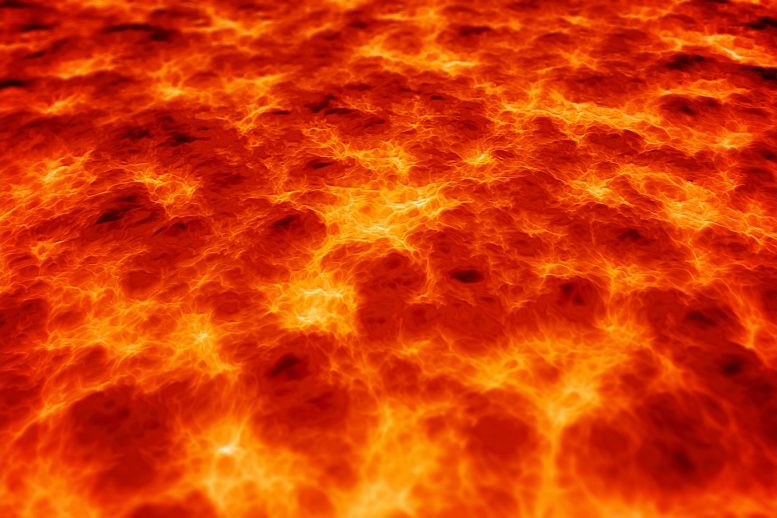
Don’t worry, an eruption is not imminent.
Research reveals magma activity beneath Mount Edgecumbe.
According to a recent study from the Alaska Volcano Observatory, magma underneath the long-dormant Mount Edgecumbe volcano in Southeast Alaska has been moving upward through the Earth’s crust.
The observatory’s innovative method may enable early identification of volcanic activity in Alaska. According to computer modeling based on satellite data, magma at Mount Edgecumbe is rising from a depth of approximately 12 miles to around 6 miles, causing substantial surface deformation and earthquakes.
“That’s the fastest rate of volcanic deformation that we currently have in Alaska,” said the research paper’s lead author, Ronni Grapenthin, a University of Alaska Fairbanks associate professor of geodesy. “And while it is not uncommon for volcanoes to deform, the activity at Edgecumbe is unusual because reactivation of dormant volcanic systems is rarely observed,” he said.
According to Grapenthin, an eruption is not imminent. Researchers from the UAF Geophysical Institute and the U.S. Geological Survey recently published their findings in the journal Geophysical Research Letters.
The Alaska Volcano Observatory cooperated with another Geophysical Institute unit, the Alaska Satellite Facility, to analyze data in the cloud – a first for the volcano team. Instead of having to download and organize data, which may take weeks or months, researchers can use cloud computing, which uses distant servers to store data and provide computing services.
When a series of earthquakes were detected near Mount Edgecumbe on April 11, 2022, the research team got to work. The researchers analyzed ground deformation detected in satellite radar data over the past 7 1/2 years.
Four days later, on April 15, the team had a preliminary result: An intrusion of new magma was causing the earthquakes. A small number of earthquakes began under Edgecumbe in 2020, but the cause was ambiguous until the deformation results were produced.
Additional data processing confirmed the preliminary finding. The Alaska Volcano Observatory informed the public on April 22, less than two weeks after the latest batch of Edgecumbe earthquakes was reported.
“We’ve done these kinds of analyses before, but new streamlined cloud-based workflows cut weeks or months of analysis down to just days,” said David Fee, the Alaska Volcano Observatory’s coordinating scientist at the Geophysical Institute.
Mount Edgecumbe, at 3,200 feet, is on Kruzof Island on the west side of Sitka Sound. It is part of the Mount Edgecumbe Volcanic Field, which includes the domes and crater of adjacent Crater Ridge. Most striking for the researchers was an area of ground uplift on southern Kruzof Island 10.5 miles in diameter and centered 1.5 miles east of the volcano. The upward deformation began abruptly in August 2018 and continued at a rate of 3.4 inches annually, for a total of 10.6 inches through early 2022.
Subsequent computer modeling indicated the cause was the intrusion of new magma. The new deformation-based analysis will allow for earlier detection of volcanic unrest because ground deformation is one of its earliest indicators. Deformation can occur without accompanying seismic activity, making ground uplift a key symptom to watch.
The volcano observatory is applying the new approach to other volcanoes in Alaska, including Trident Volcano, about 30 miles north of Katmai Bay. The volcano is showing signs of elevated unrest. Mount Edgecumbe isn’t showing signs of an imminent eruption, Grapenthin said.
“This magma intrusion has been going on for three-plus years now,” he said. “Prior to an eruption, we expect more signs of unrest: more seismicity, more deformation, and — importantly — changes in the patterns of seismicity and deformation.”
The researchers say the magma is likely reaching an upper chamber through a near-vertical conduit. But they also believe the magma is precluded from moving further upward by thick magma already in the upper chamber.
The new magma is forcing the entire surface up instead. Mount Edgecumbe is 15 miles west of Sitka, which has a population of about 8,500 residents. The volcano last erupted 800 to 900 years ago, as cited in Lingít oral history handed down by Herman Kitka. A group of Tlingits in four canoes had camped on the coast about 15 or 20 miles south of some large smoke plumes, according to the account. A scouting party in a canoe was sent to investigate the smoke and reported: “a mountain blinking, spouting fire and smoke.”
Reference: “Return From Dormancy: Rapid Inflation and Seismic Unrest Driven by Transcrustal Magma Transfer at Mt. Edgecumbe (L’úx Shaa) Volcano, Alaska” by Ronni Grapenthin, Yitian Cheng, Mario Angarita, Darren Tan, Franz J. Meyer, David Fee and Aaron Wech, 10 October 2022, Geophysical Research Letters.
DOI: 10.1029/2022GL099464
The Alaska Volcano Observatory is a joint program of the Geophysical Institute, the U.S. Geological Survey, and the Alaska Division of Geological and Geophysical Surveys.

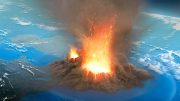
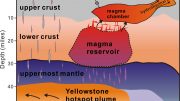
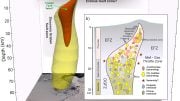
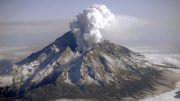
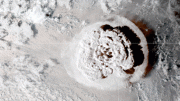
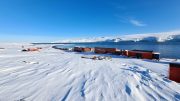
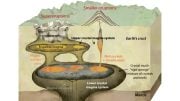
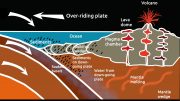
A volcano is considered dormant if it hasn’t erupted in 10,000 years
So this is an active volcano
A volcano is considered dormant if it hasn’t erupted in 10,000 years
So this is an active volcano
A volcano is considered dormant if it hasn’t erupted in 10,000 years.
So this is an active volcano.
A volcano is considered dormant if it hasn’t erupted in 10,000 years.
So this is an active volcano.
When is the magma expected to surface?
Thank you
800-900 years since it’s last eruption is a blink of the eye in geologic time. That’s not a dormant volcano, but in the lower 48, would be considered active and worth paying more attention to like they watch the upper Cascade Range in OR and WA. That casualness may surprise them one day like Mt. St. Helens did in the 1980’s.
Critical Question: WHAT is causing the earth core to be so active?? ; thus forcing magma outward-upward to the surface…. and what is happening with the MILLION volcanoes at the oceans’ floors?????!!!!!!!!!!!
Get helcopter put some iron metal concrete on top of the volcano that will claim it down before it blow up
Haaaaaa REALLY @@!!
Maybe the Messing around with CERN collider or China creating the world’s most powerful magnet might be causing problems with molten core metals moving to surface?? Of course, I’m not a scientist in any way…also heard China creating an artificial sun (?) Sooo, who knows what’s going on there !
Mauna Loa La Palma Hunga Tonga at al and serious earthquakes are all being caused by increased ocean temperatures due to climate change reducing transfer of 20,000 to 75,000 atomic bombs worth of heat generated by the earth’s radioactive core every day into outer space. The earth is a nuclear reactor. Cooling the oceans is the only solution before a Yellowstone eruption occurs soon.
I believe we will see more volcanic activity since the magnetic poles have changed. We are “flipping. So it would seem to make sense that the “blobs” would change.
A volcano is considered dormant if it hasn’t erupted in 10,000 years.
So this is an active volcano.
Volcanoes and their undersea activity has more to do with ocean temperatures in volatile areas. Not “due to climate change”. The earth’s core, and subsequent makeup has more to do with this than you give credit
Volcanoes erupt. No conspiracies here folks lol